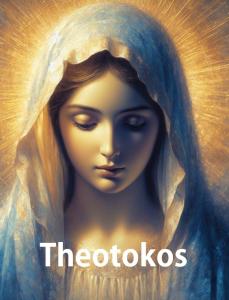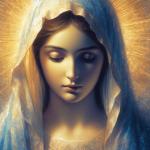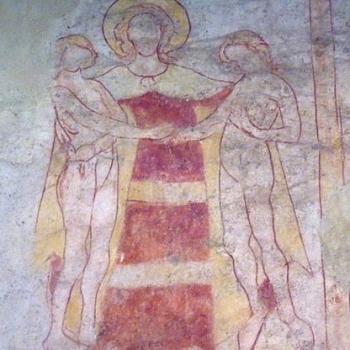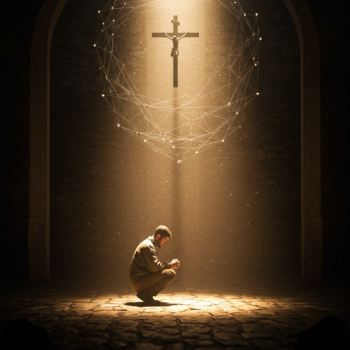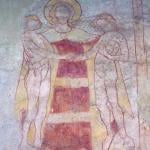Special thanks to Matt Graham for his very thoughtful and honest contribution to this discussion. I hope we both grow in greater understanding through this continued dialogue.
To start, I appreciate that Matt started on where we agree. I also appreciate that Matt sees the difference between latria, dulia, and hyperdulia. However, Matt veers a bit off track in his claim that the veneration of the Saints and the Virgin Mary entered the Church via pagan accretion.
For this article, I offer a counter that fits better with the development of Christian doctrine. Specifically, I turn to St. John Henry Cardinal Newman’s quintessential work, An Essay on the Development of Christian Doctrine. In this work, St. Cardinal Newman makes the following claims regarding veneration of the Saints and the Virgin Mary:
- Through the Incarnation, Saints share in a measure of God’s glory.
- Also, through the Incarnation, the Virgin Mary, as Theotokos, shares in the glory of God to a higher degree than the glorified Saints.
- The development of theology regarding the Incarnation contributed to the cult of the Saints and Virgin Mary, not pagan accretions.
A Measure of God’s Glory
St. Cardinal Newman, drawing on the works of St. Athanasius of Alexandria against the Arians and in defense of the Incarnation, sees the veneration of the Saints as directly linked to a proper understanding of the Incarnation. St. Athanasius, in his crucial work On the Incarnation, stated:
For He was made man that we might be made God.
And in Against the Arians:
Therefore He was not man, and then became God, but He was God, and then became man, and that to deify us.
If God the Son became a man and this in turn brought man into God, St. Cardinal Newman saw a direct connection in how the veneration of the Saints and Virgin Mary took on greater meaning in the 4th and 5th centuries, when the Church attained a greater understanding of the Incarnation.
It appears to be distinctly stated in this passage, that those who are formally recognized as God’s adopted sons in Christ, are fit objects of worship on account of Him who is in them; a doctrine which both interprets and accounts for the invocation of Saints, the cultus of relics, and the religious veneration in which even the living have sometimes been held, who, being saintly, were distinguished by miraculous gifts. Worship then is the necessary correlative of glory; and in the same sense in which created natures can share in the Creator’s incommunicable glory, are they also allowed a share of that worship which is His property alone. (An Essay on the Development of Christian Doctrine, Chapter 4, Section 2)
In the sense St. Cardinal Newman uses above, a sense in line with St. Athanasius’ understanding of the implication of the Incarnation, veneration of the Saints grew naturally out of an understanding of deified nature of gloried man, not out of some accretion from pagan religion or philosophy. We honor the Saints because they share in God’s glory, a glory God does not hold back from sharing.
The Catechism of the Catholic Church also supports this view by citing St. Athanasius and St. Thomas Aquinas in paragraph 460.
The Implication of Mary as Theotokos
Moreover, St. Cardinal Newman saw the growth in prominence of honoring the Virgin Mary emerge out of the understanding of her role as the Theotokos (God-bearer), especially in the 5th century. Admitting the lack of evidence in the early Church, St. Cardinal Newman states:
I have said that there was in the first ages no public and ecclesiastical recognition of the place which St. Mary holds in the Economy of grace; this was reserved for the fifth century, as the definition of our Lord’s proper Divinity had been the work of the fourth.
In order to do honor to Christ, in order to defend the true doctrine of the Incarnation, in order to secure a right faith in the manhood of the Eternal Son, the Council of Ephesus determined the Blessed Virgin to be the Mother of God. Thus all heresies of that day, though opposite to each other, tended in a most wonderful way to her exaltation; and the School of Antioch, the fountain of primitive rationalism, led the Church to determine first the conceivable greatness of a creature, and then the incommunicable dignity of the Blessed Virgin. (An Essay on the Development of Christian Doctrine, Chapter 4, Section 10)
Therefore, the Church rightly honors the Virgin Mary due to her role as the God-bearer. In this sense of Mary as Theotokos, the Church interprets St. John’s vision of the Woman in Revelation 12. Furthermore, to deny Mary role as Theotokos does indeed deny her of honor but this also denies Christ of His divinity and makes the heretic Arius correct after all.
The vision is found in the Apocalypse, a Woman clothed with the sun, and the moon under her feet, and upon her head a crown of twelve stars. The votaries of Mary do not exceed the true faith, unless the blasphemers of her Son came up to it. The Church of Rome is not idolatrous, unless Arianism is orthodoxy. (An Essay on the Development of Christian Doctrine, Chapter 4, Section 8)
Follow the Evidence, Matt…
In his article, Matt explains his concerns over a hypothetical source of Marian veneration. Matt sees this practice as Gnostic in origin. He states:
…how did Mary end up so high on the hierarchy of being in Catholic cosmology, I am inclined to think that there was some influence here. And this is because I don’t see this exalted view of Mary in the Scriptures themselves. If Mary is who Catholics say she is, then testimony to this view is woefully absent in the New Testament.
How does he arrive at this conclusion?
We know that the worship of angels was condemned among Christians, but it was practiced among the Gnostics. Additionally, their cosmology was a tiered system where their god “The One” was incomprehensible, immeasurable, eternal, pure perfection, etc. and there existed a descending divine hierarchy of aeons with Barbelo at the top of this hierarchy.
Therefore, since Matt fails to see Marian veneration explicitly stated in Scripture, and Gnostics worshipped angels and “a descending divine hierarchy of aeons with Barbelo at the top of this hierarchy…,” Marian veneration appears to originate in Gnosticism.
Final Thoughts…The Historical Alternative to Gnostic Origins
In closing, Matt observes:
I would not get this exalted view of Mary from the Scriptures. It is so exalted that I would expect her to be discussed more in the New Testament and early Christian writings. Granted, I can’t say it’s false because we don’t hear more about her – it’s just that given her importance, I would expect very early testimony of her exalted position.
I hope that St. Cardinal Newman offers a more historical and logical sources for the veneration of the Saints and Virgin Mary than Matt’s historically tenuous appeal to Gnosticism.
Why do we not see Mary’s later “exalted” position in Scripture and the early Church? Simple: the infant Church lacked the necessary understanding and language it eventually gained in the 4th and 5th centuries. Understanding and language the Church gained through defining the nature Christ in the Incarnation. Had Arius’ or Nestorius’ views of Christ’s nature won out, the Church would now not venerate the Saints or Virgin Mary. However, thanks to the truth and implications of the Incarnation (deification and Mary as Theotokos), the Church naturally developed in this direction.
This is where the evidence leads us. I now hand it back to Matt.
Thank you!
Read The Latin Right’s other writing here.
Please visit my Facebook page and IM your questions (and follow my page) or topics for articles you would like covered.
Also, please subscribe my YouTube page for updates on upcoming articles.
